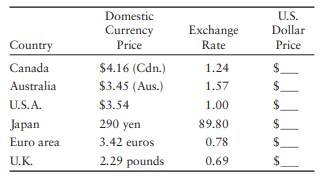

Then having a very strong dollar means that you’re going to struggle to compete in foreign markets. However, that can be a problem if you’re trying to export products. Relative to America, other places are going to be cheap. Keynes: On a practical basis, it means that if you’re a tourist and you are American, you have dollars and you want to go around the world, then you’re going to have a pretty good time. But the big story is that, actually, relative to fundamentals, the dollar is fairly strong.Ĭraig: What does a strong dollar mean for the United States and Americans? Malaysian, Taiwanese, Indian currencies, all undervalued. The Mexican peso is more than 50% undervalued. And we found that if you just look at the raw prices - and sorry, there are a lot of bug-related food puns that go into this - then 19 are undervalued relative to the dollar.

Treasury normally monitors, the big trading partners of America. Keynes: We looked at the 20 currencies that the U.S. What did you find? Which currencies are overvalued or undervalued at this point? Victoria Craig: And you’ve just reassessed this index. So if that burger was really cheap, in, say, Thailand, then that suggests that their currency is undervalued relative to the dollar. It looks at the price of a Big Mac in different places around the world and says, “OK, well, if you have some dollars, where would that Big Mac be cheaper, and where would it be more expensive?” The idea is that you’re comparing the same product across space, and that should give you a fairly good idea of whether the currency is undervalued. Soumaya Keynes: The Big Mac index is a lighthearted measure of currency valuation. The following is an edited transcript of their conversation. On the global edition of the “Marketplace Morning Report,” Soumaya Keynes, the magazine’s trade and globalization editor, told the BBC’s Victoria Craig what the latest index reading shows. The idea is that by drawing such comparisons, you can determine whether prices are too high or too low relative to overall economic output. It compares the price of the popular McDonald’s sandwich in various countries. What can a Big Mac tell us about trade and what a currency is worth? Turns out, quite a bit.īack in 1986, the Economist magazine developed a lighthearted index it dubbed simply the Big Mac index.


 0 kommentar(er)
0 kommentar(er)
